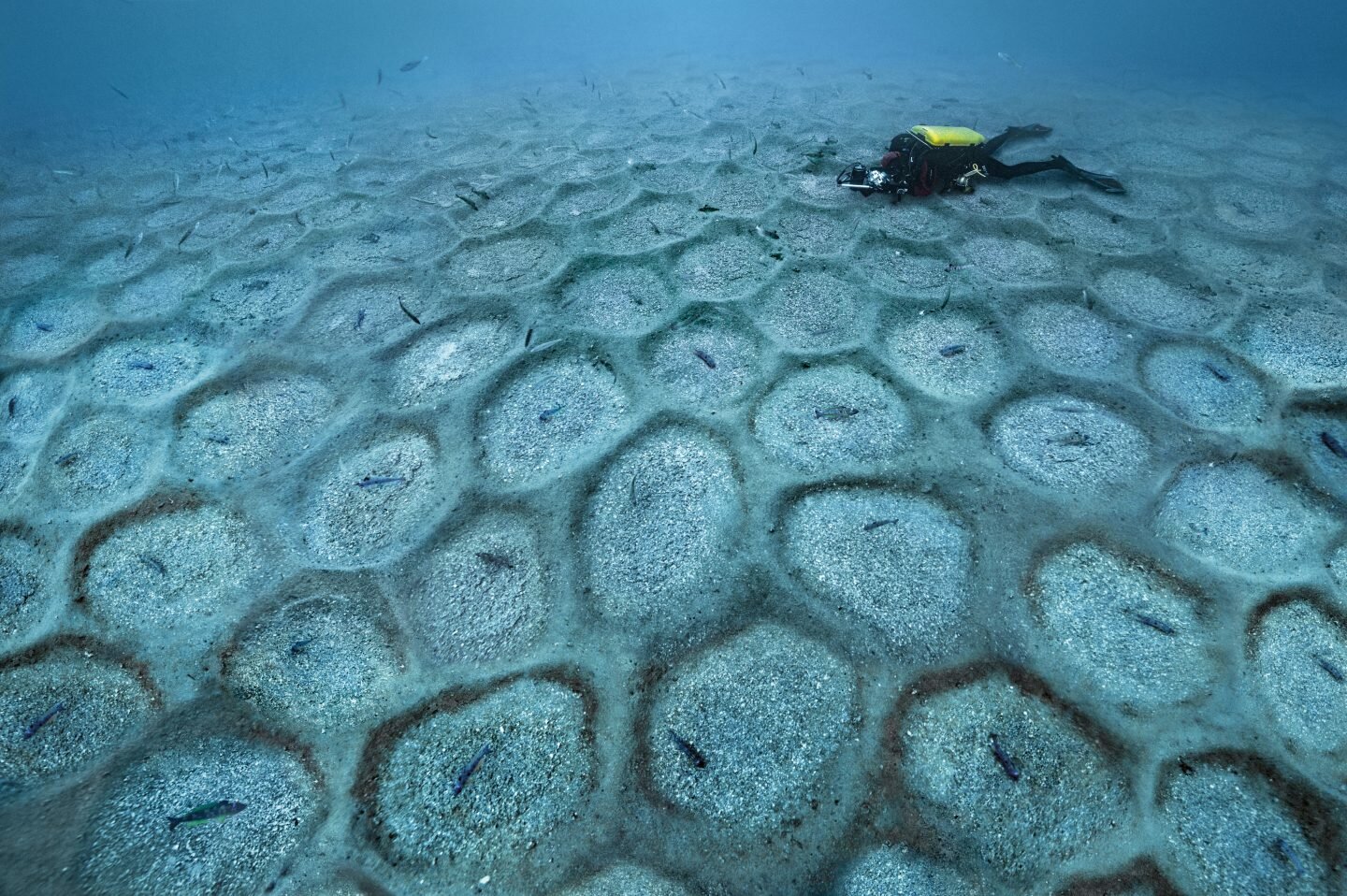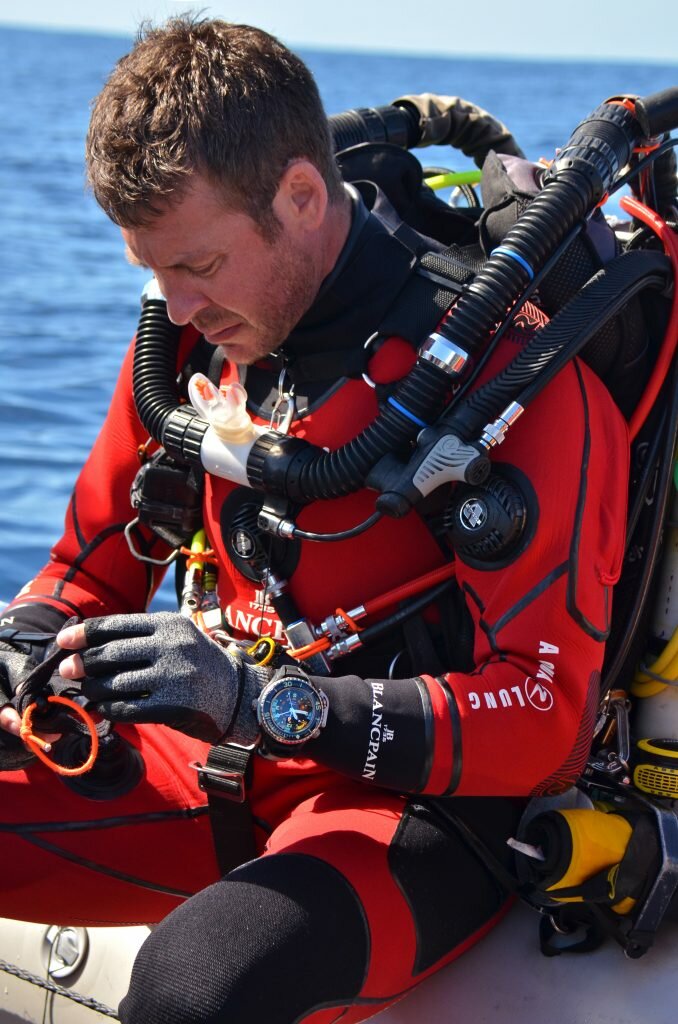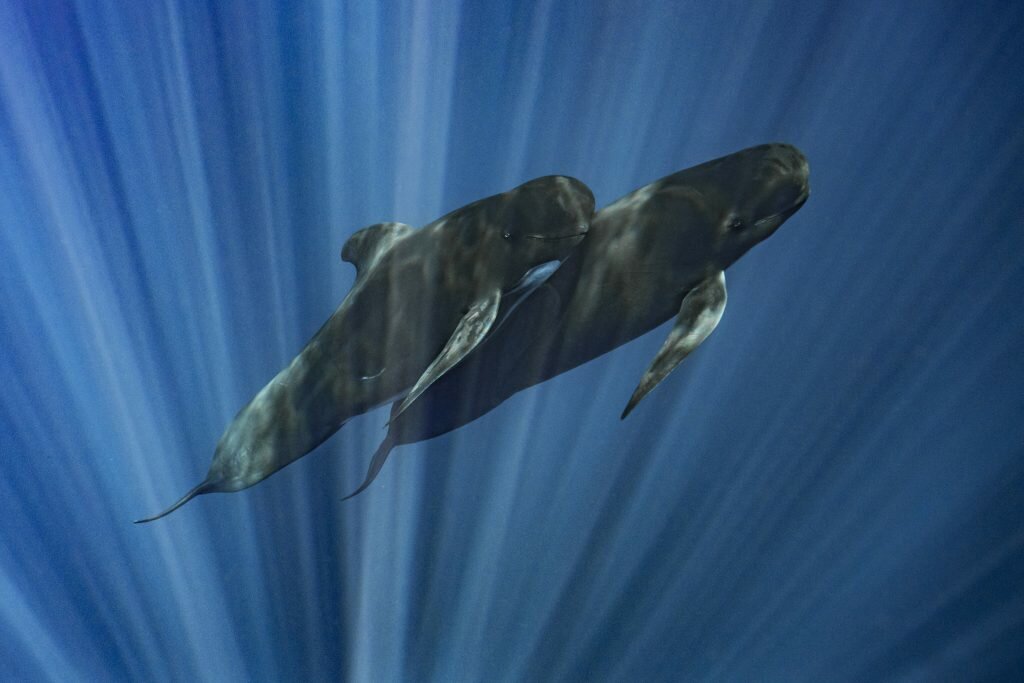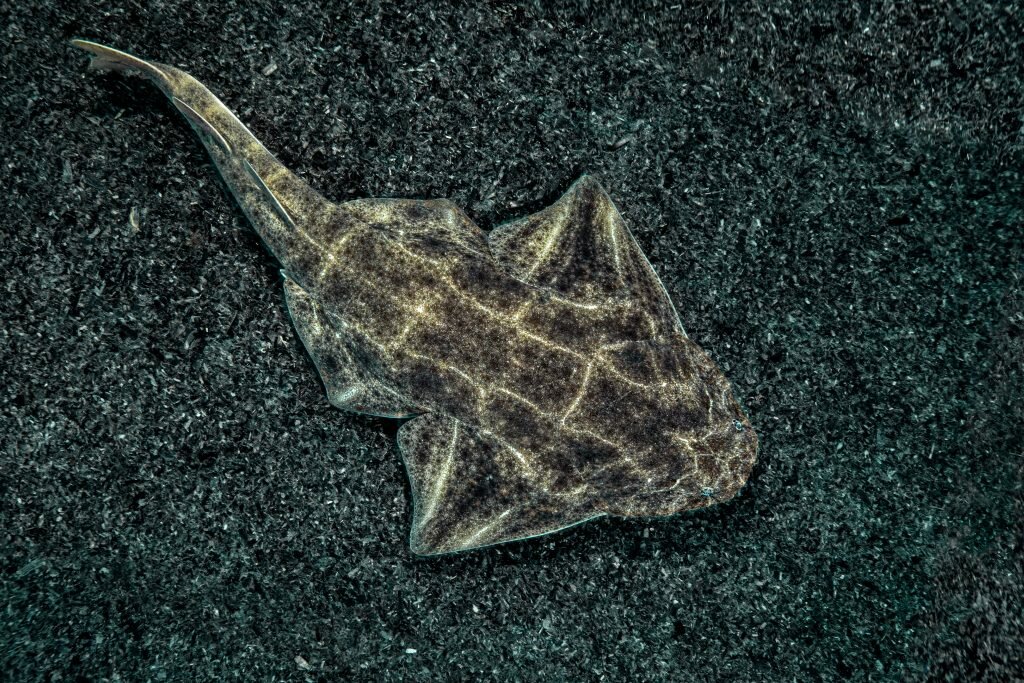When Laurent Ballesta first decided to study the French Mediterranean during the lockdown in France last summer, he’d hoped to confirm that marine biodiversity was recovering as human activity subsided. As the beaches emptied out and motorboats stood still, marine life roared back to occupy the coastal waters.
Ballesta, 46, is a marine biologist, pioneer deep diver and explorer whose work has taken him across the world. Born in Montpellier, in the south of France, he has spent decades researching marine biodiversity in the Mediterranean while pursuing rare marine species in the world, sponsored by Blancpain’s Ocean Commitment initiative. With Confinement & Biodiversity, the research project he executed with his crew at Andromède Océanologie, he’s released a series of videos explaining their observations. He shares more with A Magazine.
Laurent, you noted that biodiversity in coastal waters increased during the lockdown. Isn’t this a very speedy recovery?
Confinement & Biodiversity confirmed our intuition that we’d see an increase in biodiversity and biomass in coastal regions. We validated an increase in the number of species and the quantity of each species, due to reduced human activity. An increase in biodiversity helps restore balance. But there are many reasons why biodiversity in coastal waters shrink. One often-underestimated reason is human disturbance, especially noise pollution, which faded during the lockdown.
What were the impacts of human activities in Mediterranean waters prior to the confinement?
The Mediterranean has faced overfishing (affecting up to 90 percent of species), chemical and microplastic pollution, and waste mismanagement due to seasonal tourism. It sees 30 percent of the world’s maritime traffic, a statistic that increases annually. All this is very damaging to an environment that still holds incredible underwater riches and wonders: 1 in 5 species of flora and fauna is endemic to its waters.
How much of the Mediterranean’s coast did you cover during your research?
The French Mediterranean is segmented into three regions, and we covered all three this year.
You took lots of water samples during this project. What did the samples reveal?
Our main purpose wasn’t to study chemical pollution in the samples, but to obtain samples of DNA fragments to reveal flora and fauna presence that we didn’t directly observe. The process is known as environmental DNA analysis, and we managed to inventory several species that we hadn’t seen, such as the angel shark. It’s a species that’s never been seen in Corsica before.
What other methods did you use to study the seas?
We used bio-acoustics, where we deploy a high-tech array of microphones that records and registers all underwater sounds, which we can then use to distinguish individual sources of sound. Bio-acoustics lets us “see” the seas even when the waters are murky. We hope to use this to diagnose stress in ecosystems, but what we’ve noticed so far is that the least disturbed natural environments have the richest acoustic signatures, and are also where human activity is minimal.
What were some unexpected changes that you noticed?
We’ve seen some rare species but it’s possible their reappearance is unrelated to the confinement. We saw bottlenose dolphins close to the coastline of larger city coves, which are usually too noisy for them. We discovered the reappearance of the angel shark, which we believe has been absent from French waters for over 50 years. And we saw picarel in their reproductive cycle — something I’ve only seen twice in my lifetime. The main takeaway is that animals require peace and quiet to complete their life cycles.
Haven’t marine biologists always said that the ocean’s ecosystem can restore itself quickly?
When we talk about ecosystems recovering quickly, we’re talking about Marine Protected Areas (MPAs) and time spans of years. In this case, it was two months of cessation and two months of partial activity, which although very short, have allowed us to see recovery indicators. It is a surprising and never-before-seen result. It really reinforces the establishment of MPAs. Some scientists believe that protecting 20 percent of the coastline would create a beneficial spillover effect for fishermen in the remaining 80 percent. Unfortunately, only 1 percent of coastlines globally are protected today.
What were three things that you observed in the waters that remained unchanged during this time?
There are plenty of other things that have not changed in the few months we’ve had a partial lockdown, but the most significant would be the continued proliferation of filamentous algae, the state of red coral in the waters and the health status of Posidonia oceanica, or Neptune grass as it’s more commonly known. This is seagrass that’s endemic to the Mediterranean region.
These three things that have not changed. Do they bode well for the Mediterranean’s marine ecosystem?
Unfortunately not. Filamentous algae grow more and more each year, and their proliferation is affiliated with warming waters as well as fertiliser runoff from agricultural farms in the region. They stifle the presence of still invertebrates (such as clams, worms, anemones, etc.) and this has an impact on the biodiversity and ecosystem, naturally. Red coral, which is also native and exclusive to the Mediterranean, has drastically disappeared from the continental coasts as well as around Corsica. It will take decades, even centuries, to restore red coral to these waters.
As we understand it, Neptune grass is used by biologists as an indicator of pollution-free waters. Is it also diminishing?
Seagrass cover has significantly diminished in the French Riviera, by nearly a third in the last five years. It’s disappeared most in areas where leisure craft frequently drop anchor, around coastal coves and other parts of the seas. Seagrass fields are important because they serve as a home for marine life but also help to prevent erosion. And of all these three constants, each is related to a different cause: Algae growth is due to climate change, red coral damage is due to overfishing, and seagrass health is due to overuse of the coastline.
What can governments and world leaders learn from this to better protect marine biodiversity?
Rules should be established. The lack of human restraint along the coastline, from professional fishing to recreational activities and more, suggests a need for regulation. The sea isn’t an amusement park; it’s a nature reserve and we should respect it as such. We should increase the number of MPAs and their sizes. In Switzerland, jet-skis are forbidden on freshwater lakes as they scare the freshwater fish. Are lakeside residents unhappier? I don’t think so.
Confinement & Biodiversity is available to watch on Blancpain’s Vimeo channel. Blancpain also released the Fifty Fathoms Ocean Commitment III watch in a limited edition of 250 pieces, with proceeds going to support Laurent Ballesta’s work. Learn more at blancpain-ocean-commitment.com.

Blancpain Ocean Commitment III: Supporting ocean conservation and research
Blancpain is one of the biggest corporate sponsors of ocean protection and Marine Protected Areas in the world. It also supports Laurent Ballesta and his organisation, Andromède Océanologie, as they pursue new research.
To support Confinement & Biodiversity and more, the Blancpain Fifty Fathoms Ocean Commitment III in steel was introduced as a limited-editio 250-piece reference. The watch is a classic Fifty Fathoms three-hander with date display, in a stunning deep marine blue with an oversized diving bezel. The watch is powered by the reliable self-winding calibre 1151, which has a 96-hour power reserve.
The watch features a sail-canvas strap along with a NATO strap in the same shade as the sunray-brushed dial, which bears the Ocean Commitment logo. Proceeds from the timepieces will go towards supporting Ballesta’s work, so you can commit to the high seas and gain a beautiful diving watch all at once.
This article was first published online on 14 January 2021.




